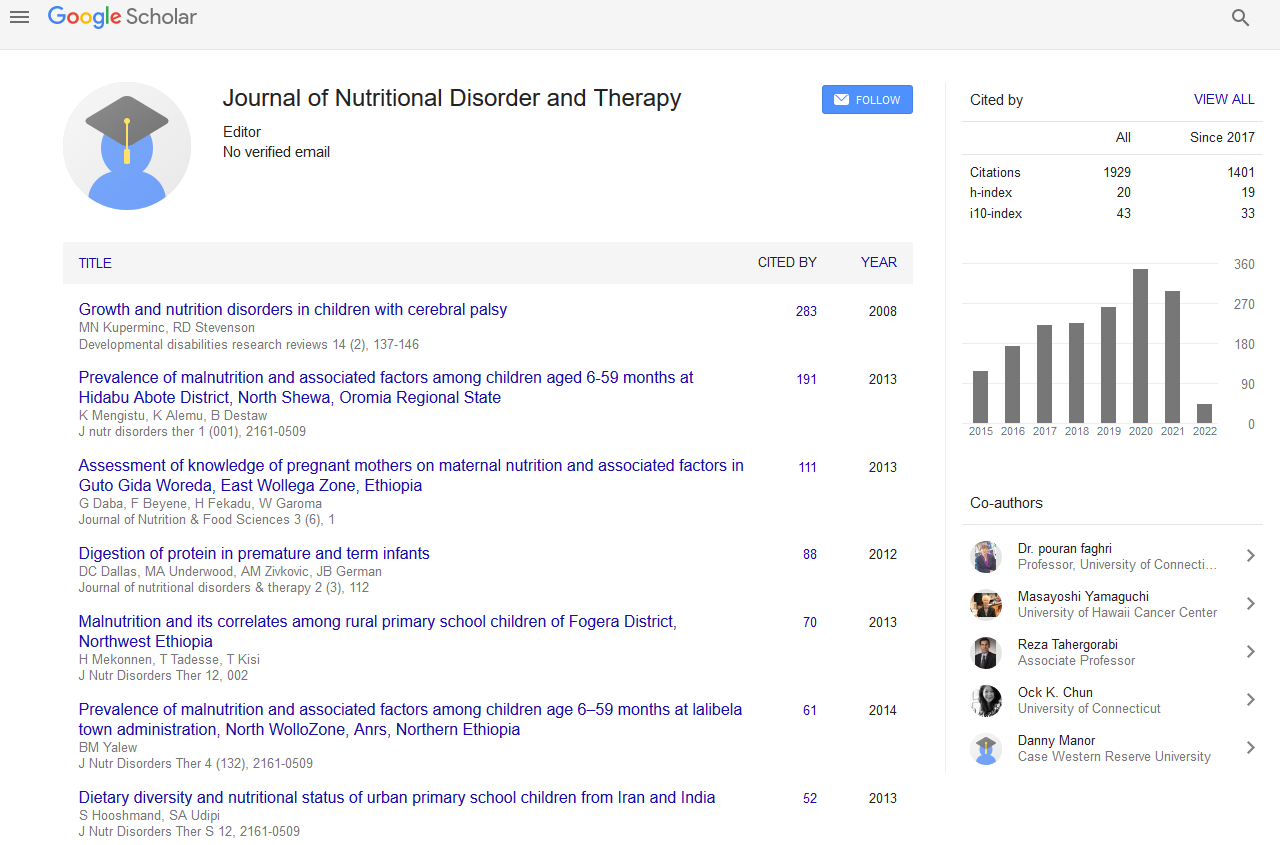Indexed In
- Open J Gate
- Genamics JournalSeek
- Academic Keys
- JournalTOCs
- Ulrich's Periodicals Directory
- RefSeek
- Hamdard University
- EBSCO A-Z
- OCLC- WorldCat
- Publons
- Geneva Foundation for Medical Education and Research
- Euro Pub
Useful Links
Share This Page
Journal Flyer

Open Access Journals
- Agri and Aquaculture
- Biochemistry
- Bioinformatics & Systems Biology
- Business & Management
- Chemistry
- Clinical Sciences
- Engineering
- Food & Nutrition
- General Science
- Genetics & Molecular Biology
- Immunology & Microbiology
- Medical Sciences
- Neuroscience & Psychology
- Nursing & Health Care
- Pharmaceutical Sciences
Abstract
Analysis of Iodine Deficiency Disorders in Kashi and Kizilsu Kirgiz Prefecture at Southern Edge of Tarim Basin in China
Ji-yong J, Jiang Ning BA, Wen Juan MS, Wang Chen BA, Ma Pin-jiang BA and TuJie MS
Objective: To investigate and analyze current situation of IDD (Iodine Deficiency Disorders) control in Kashi and Kizilsu Kirgiz Prefecture at southern edge of Tarim Basin in China, in order to provide basis for implementing synthetic iodine supplement measures.
Methods: According to “Focus Investigation Program of IDD in Areas with High Risk in China” formulated by China Endemic Diseases Controlling Center, integrated survey and analysis were carried out in counties/cities of Kashi (12 counties/cities) and Kizilsu Kirgiz Prefecture (1 city and 3 counties). The urine samples of children and housewives from Kashi and Kizilsu Kirghiz regions were selected. The levels of iodine nutrition in the body were surveyed, and to study its effects in controlling endemic cretinism and regression of goiter. Totally there were 65 cases with endemic cretinism diagnosed in the two investigated prefectures. Investigation on table salt intake of residents was conducted by entering into households. In Kashi and Kizilsu Kirgiz Prefecture, coverage rate of iodized salt was 73.41% and 61.53%, edible rate of qualified iodized salt was 64.62% and 54.23%; edible rate of non-iodized salt (marsh salt and rock salt) was 26.59% and 38.47%, respectively; Goiter rate of students aged from 8 to 10 year-old was 23.0% in Kashi and 13.6% in Kizilsu Kirgiz. There were 1921 cases detected with mild mental retardation (≤69) in the two prefectures, accounted for 18.4%. Median of urine iodine of the students was 136.5 μg/L in Kashi and 142.5 μg/L in Kizilsu Kirgiz. Urine iodine of women in child-bearing period was 85.5 μg/L in Kashi and 99.3 μg/L in Kizilsu Kirgiz.
Conclusions: Kashi and Kizilsu Kirgiz Prefecture in southern Xinjiang of China are severely endemic area of IDD. Intramuscular injection or oral intake of iodinated oil should be conducted in women in child-bearing period in the two prefectures, in order to avoid the birth with endemic cretinism. There is only qualitative standard for diagnosing endemic cretinism presently, and specifically quantitative experiment diagnosis is deficient. It needs for further research.


